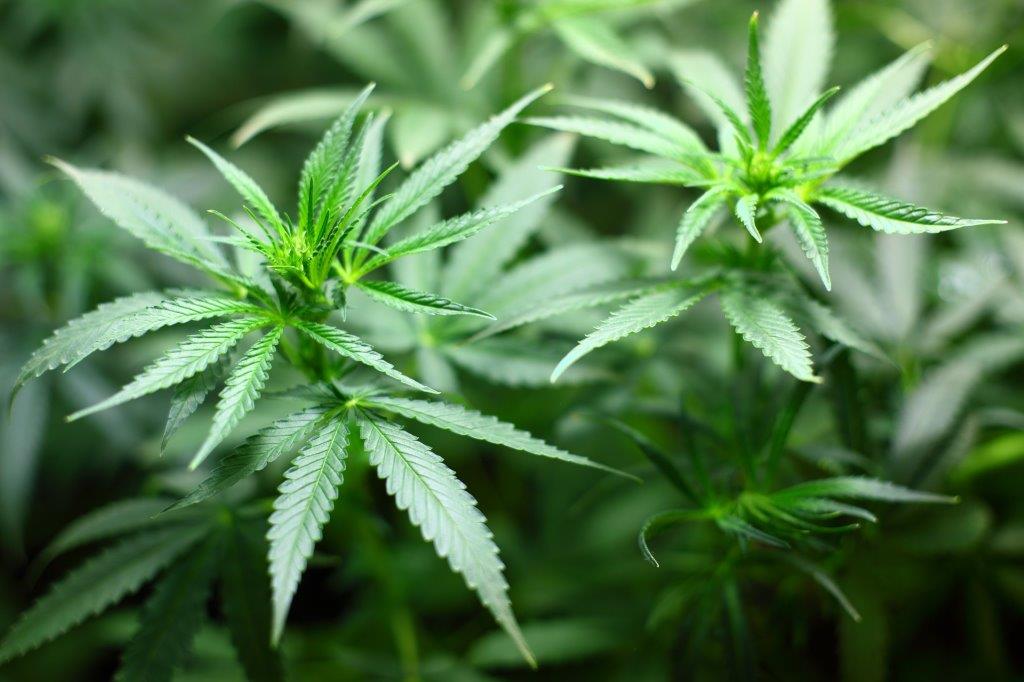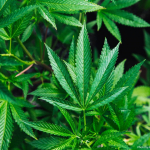Given that many states have or are now moving forward with the legalization of medical and recreational marijuana, it should be no surprise that we are seeing an increasing number of women in our clinic who are using marijuana on a regular basis. According to a nationwide survey, 7.3% of Americans 12 or older regularly used marijuana in 2012, up from 5.8% of Americans in 2007. Among younger and socioeconomically disadvantaged women, prevalence of marijuana use is even higher, in the range of 15 to 28 percent.
The majority of marijuana users are young and of reproductive age. It is estimated that roughly half of female marijuana users continue to use during pregnancy. These changes in the prevalence of marijuana use raise important questions about the effects of marijuana use during pregnancy on embryo development. At this point in time, the data, though limited, suggests that marijuana use during pregnancy is associated with elevated risk for miscarriages, birth defects, developmental delays, and learning disabilities. Animal data supports these findings and suggests even further potential for developmental issues. Researchers at Georgetown University Medical Center summarized the adverse outcomes associated with marijuana use during pregnancy and linked those outcomes to specific molecular signaling pathways (1). It is one of the most comprehensive review papers on marijuana effects during pregnancy to date and provides clinicians with information which can be used to discuss the risks of using of marijuana during pregnancy.
Metabolism of THC as it Relates to Pregnancy:
THC, the main psychoactive component of marijuana, has a half life of 8 days in fat and is detectable for up to 30 days in the bloodstream. Once circulating in the bloodstream, THC is readily able to cross the blood brain barrier and the placenta due to its lipophilic nature. In a primate study, THC was detectable in fetal blood just 15 minutes after intravenous infusion in the mother. Three hours following infusion, fetal blood levels of THC equilibrated to maternal blood levels (2). A separate study in canines found that THC was deposited in fetal fat at concentrations that are approximately 30% of maternal plasma levels (3). Given the pharmacokinetic properties of THC, maternal tissues act as a reservoir for THC and other cannabinoids which results in prolonged fetal exposure. Taken one step further, when marijuana is used occasionally during pregnancy, say once per month, fetal exposure to marijuana persists throughout the fetus’ entire development in the womb.
Marijuana Administration and THC Dosage:
Typically, marijuana is inhaled (through smoking or vaping) or consumed in edible form. Inhalation results in rapid drug delivery and onset of physiological effects, whereas oral consumption is associated with a slower and lower peak THC concentration. Dosages of THC are difficult to assess through clinical interview when a patient reports smoking because drug exposure varies according to smoking topography (the number, length, depth, and volume of inhalations). Dosages of THC in commercially available edibles are much more straightforward.
It is also important to note that older research on the effects of marijuana on embryo development is not reflective of today’s typical dosages. The National Institute on Drug Abuse maintains a program to track THC potency and has found that THC levels in marijuana have increased nearly 25-fold since the 1970s (4).
How Cannabinoids Act Upon the Brain:
Cannabinoids mainly act upon two prominent G protein-coupled receptors: CB1 and CB2. CB1 receptors are present in high levels in the brain and gonads (testes and ovaries) whereas CB2 receptors are more sparse and are found in immune cells and some neuronal cells (5). Endogenous cannabinoids produced by the human body interact with these receptors and current data indicate that the endocannabinoid system plays a role in the regulation of sleep, feeding, pain, learning, and memory.
It is thought that the psychoactive effects of THC are a result of binding (partial agonist) to CB1 receptors in the brain. Under homeostatic conditions, cannabinoid signaling is involved in a number of important, tightly regulated processes that are necessary for healthy embryo development. Disruption of these tightly regulated signaling pathways by exogenous cannabinoids may have a number of downstream adverse effects on: (1) Obstetrical Outcomes (ie., preimplantation and implantation), and (2) Embryo Development (ie., direct effects on the fetus).
How Cannabinoids Affect Obstetrical Outcomes:
Implantation, the attachment of the fertilized egg to the uterine wall, is dependent upon a number of tightly regulated processes. Evidence suggests that there are five ways in which cannabinoids can affect implantation:
- Impairment of Fallopian Motility: Cannabinoid signaling controls muscle contraction and relaxation in the fallopian tube responsible for the movement of a fertilized egg through the fallopian tube and into the uterus.
- Ectopic Pregnancy: Previous studies have shown that the blood collected from women who have had ectopic pregnancies contains significantly higher levels of the naturally occurring cannabinoid, anandamide, compared to normal pregnant controls. Consistency between human and animal data adds confidence that the observed findings in animal models of altered cannabinoid signaling may play a role in ectopic pregnancy.
- Non-Hatched or Non-Viable Embryo: In mice models known to have altered cannabinoid signaling, an increased mortality of offspring was observed in association with implantation of slowly developing embryos (6).
- Decreased Uterine Receptivity: It is theorized that the binding of exogenous cannabinoids to CB1 receptors in the uterus has embryotoxic effects on the uterine environment. Modeling of this scenario has halted the development of blastocysts in vivo and in vitro (7).
- Miscarriage (Spontaneous Abortion): Folic acid (Vitamin B9) is essential for embryo development and cannot be synthesized by the body which is why women are encouraged to take folic acid supplements during pregnancy. THC significantly decreases fetal folic acid uptake. Low levels of folic acid during pregnancy are associated with higher rates of miscarriages, as well as neural tube defects and low birth weight.
How Cannabinoids Affect Embryo Development:
THC crosses the placenta, enters fetal blood circulation, passes through the blood brain barrier, and is found at the highest levels in fetal fat tissue. The brain is 60% fat and therefore stores THC following maternal ingestion. The brain is also densely populated with CB1 receptors which mediate THC’s psychoactive properties.
- Folic Acid Uptake: As stated above, THC interferes with fetal folic acid uptake. Low levels of folic acid during pregnancy are known to be associated with neural tube defects and low birth weight.
- Cellular Growth: Exogenous cannabinoids may interfere with critical pathways for cellular growth and angiogenesis (formation of new blood vessels).
- Neural Development: Cannabinoids acting upon the CB1 receptor have the ability to influence the differentiation of neural cells from stem cells in the brain. This has tremendous potential to negatively affect learning and memory as well as developmental processes such as limb development.
Risk/Benefit Analysis:
Usually we take a balanced approach to the use of medications during pregnancy: Does the potential benefit of taking a particular drug outweigh the risks of fetal exposure to that drug or the effects of untreated disease in the mother? At this point, there is no compelling evidence to suggest that marijuana is an effective treatment for any mental health disorders. Given that a number of adverse outcomes are associated with marijuana use during pregnancy, the risk benefit decision seems straightforward: the benefits do not outweigh the risks.
Why Do Women Use Marijuana During Pregnancy?
Many women view marijuana as a relatively benign drug and are not aware that its use poses any health risks. Given the dearth of information on the reproductive safety of cannabis and the potential risk for adverse outcomes, the American College of Obstetricians and Gynecologists (ACOG) has issued a committee opinion on the use of marijuana in pregnant and nursing women, calling for OB-GYNs to educate and urge their patients who are pregnant or contemplating pregnancy to discontinue marijuana use.
But what about the women who use marijuana to help them manage various psychiatric symptoms, including depression and anxiety? Some of these women may choose to use marijuana over traditional psychiatric medications during pregnancy. Is it because women want to avoid psychiatric medications during pregnancy? Is psychiatric care too difficult to find or too expensive? My guess is that there a number of factors at work here.
If the issue is wanting to avoid pharmacologic treatments during pregnancy — that’s a personal choice, to be made ideally with medical supervision. However, if that is the case, marijuana cannot be viewed as a substitute. Some women mistakenly believe that marijuana is safer than psychiatric medications because it is ‘natural’. Conventional antidepressants, including SSRIs, have a plethora of efficacy and reproductive safety data to support their use during pregnancy, marijuana does not. A lack of information does not make marijuana safe nor do recent changes in legislation.
Wanting to avoid pharmacologic treatment for mental health disorders during pregnancy is common. If that is the case, we can encourage women to explore non-pharmacologic treatment modalities, such as cognitive behavioral therapy which has so much efficacy data at this point and has no side effects.
If the barriers are due to provider access and cost, that is much more difficult to rectify. We have an obligation to offer effective and safe treatments for mental health disorders so that we can have healthier moms and babies. While we can’t control the direction of federal funding for healthcare or medical research, efforts are being made that bypass these traditional pathways. One approach is to empower primary care physicians to deliver effective mental health care, and technology is being leveraged to offer free or low cost web-based therapy that may allow people to access care they couldn’t have before.
Conclusion:
As legislation for medical and recreational marijuana is changing, marijuana is becoming more accessible and acceptable. Unfortunately, it will take years for research to catch up with use. The information available now warrants a cautious approach with regard to marijuana use during pregnancy and underscores an urgent need for more human data.
Alexandra Z. Sosinsky
References:
- Friedrich J, Khatib D, Parsa K, Santopietro A, Gallicano GI. The grass isn’t always greener: The effects of cannabis on embryological development. BMC Pharmacol Toxicol. 2016 Sep 29; 17(1):45.
- Martin BR, Dewey WL, Harris LS, Beckner JS. 3H-delta9-tetrahydrocannabinol distribution in pregnant dogs and their fetuses. Res Commun Chem Pathol Pharmacol. 1997;17(3):357-70.
- Bailey JR, Cunny HC, Paule MG, Slikker WJ. Fetal disposition of delta-9-tetrahydrocannabinol (THC) during late pregnancy in the rhesus monkey. Toxicol Appl Pharmacol. 1987;90(2):315-21.
- Psychoyos D, Hungund B, Cooper T, Finnell RH. A Cannabinoid Analogue of 3H-delta9-tetrahydrocannabinol Disrupts Neural Development in Chick. Birth Defects Research. 2008;83:477-488.
- Mackie K. Cannabinoid receptors: where they are and what they do. J Neuroendocrinol. 2008;1:10-4.
- Paria BC, Song H, Wang X, Schmid PC, Krebsbach RJ, Schmid HH, Bonner TI, Zimmer A, Dey SK. Dysregulated cannabinoid signaling disrupts uterine receptivity for embryo implantation. J Biol Chem. 2001;276(23):20523-8.
- Schmid PC, Paria BC, Krebsbach RJ, Schmid HH, Dey SK. Changes in anandamide levels in mouse uterus are associated with uterine receptivity for embryo implantation. Proc Natl Acad Sci USA. 1997;94(8):4188-92.








With marijuana now being legal in the state of Massachusetts, if a mother and baby test positive at birth for THC, are there still the same repercussions as there would be in a non-legal state? e.g. CPS is called, baby stays in NICU, mother cannot breastfeed, etc. (all of which happened to a family friend in CT a couple of years ago).
Great question. I don’t think we yet know how things will play out.
In Colorado, where marijuana has been legal for some time, I have seen stories (like this one) which indicate that Child Protective Services may be notified.
Hi I have a question. I am doing a workup for an ERA to test the receptivity of my lining. Then we are to implant our embryo next month. This will be approximately 6 -8 weeks since I last smoked pot. Can you tell me how long pot can /may have a negative effect on implantation rates?
Great question. I am not sure that we have the answer.
Yes, metabolites of THC can be found in the blood and urine for months after the last use; however, we don’t really know how THC may affect implantation. Hopefully we will be able to give you more precise information in the future.